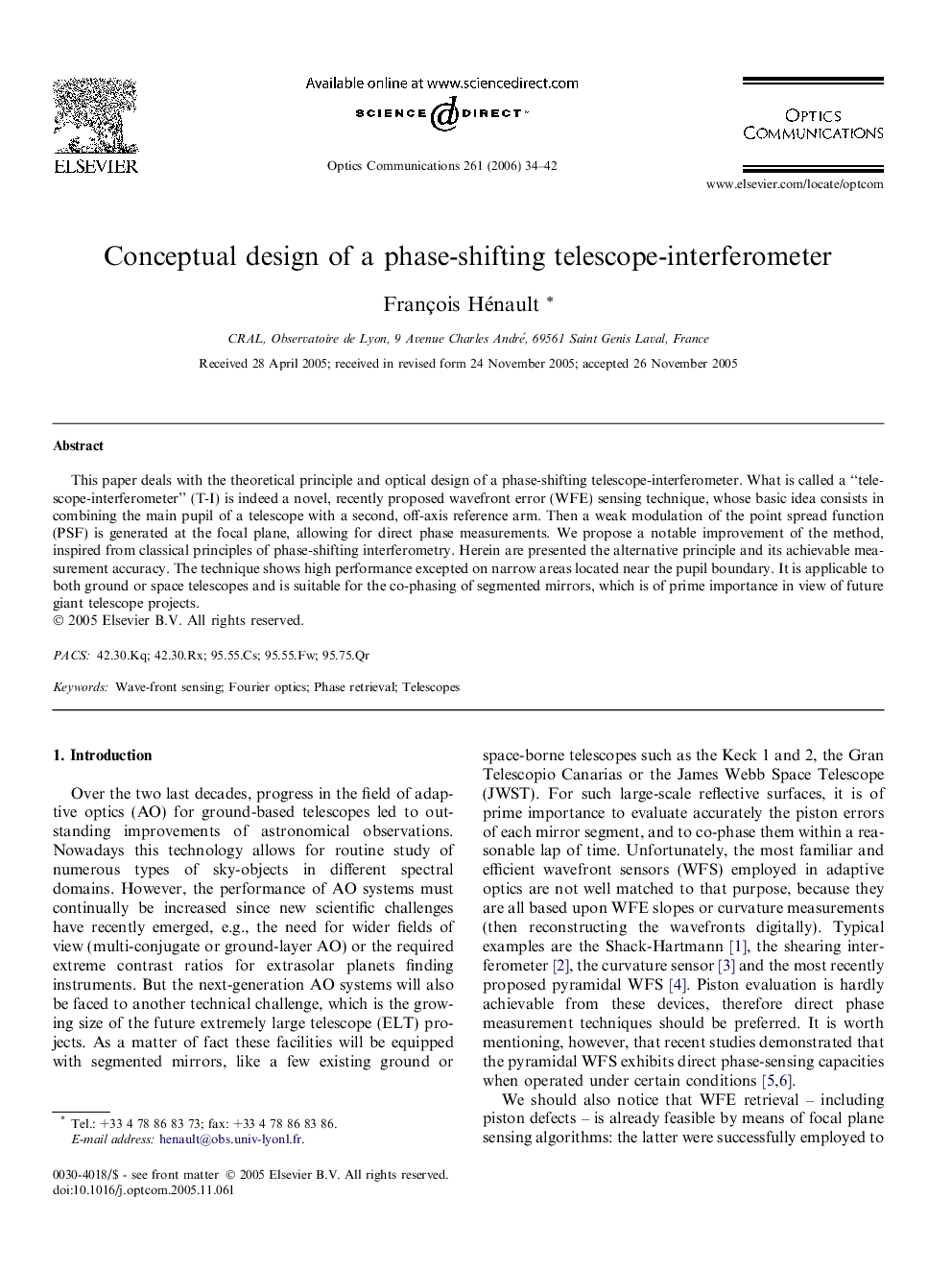| Article ID | Journal | Published Year | Pages | File Type |
|---|---|---|---|---|
| 1542687 | Optics Communications | 2006 | 9 Pages |
This paper deals with the theoretical principle and optical design of a phase-shifting telescope-interferometer. What is called a “telescope-interferometer” (T-I) is indeed a novel, recently proposed wavefront error (WFE) sensing technique, whose basic idea consists in combining the main pupil of a telescope with a second, off-axis reference arm. Then a weak modulation of the point spread function (PSF) is generated at the focal plane, allowing for direct phase measurements. We propose a notable improvement of the method, inspired from classical principles of phase-shifting interferometry. Herein are presented the alternative principle and its achievable measurement accuracy. The technique shows high performance excepted on narrow areas located near the pupil boundary. It is applicable to both ground or space telescopes and is suitable for the co-phasing of segmented mirrors, which is of prime importance in view of future giant telescope projects.
